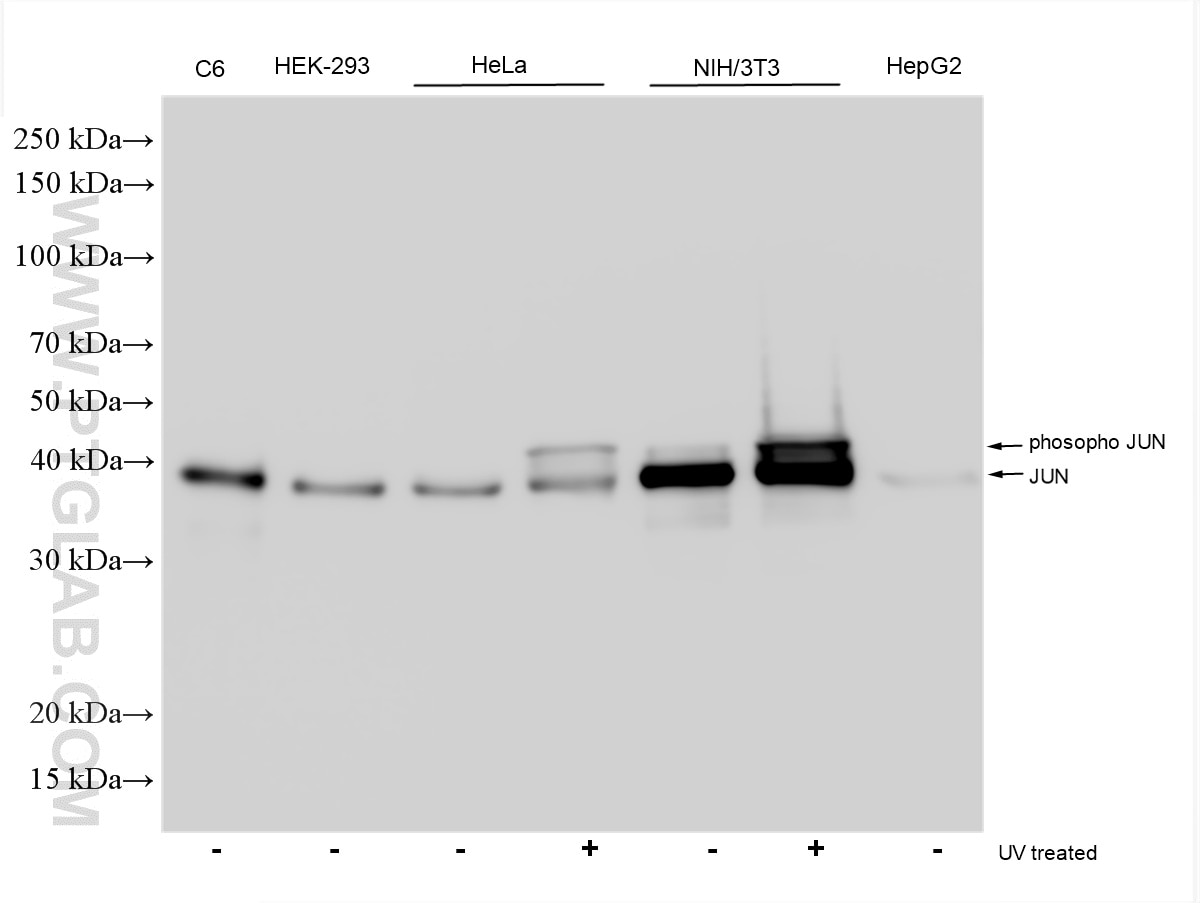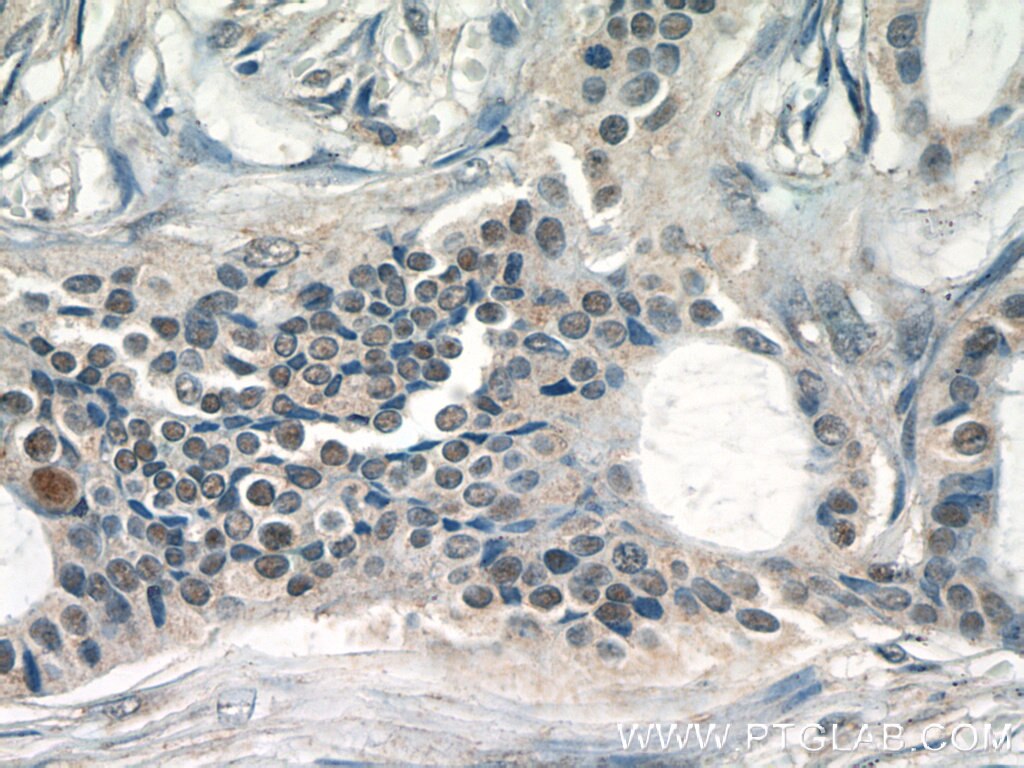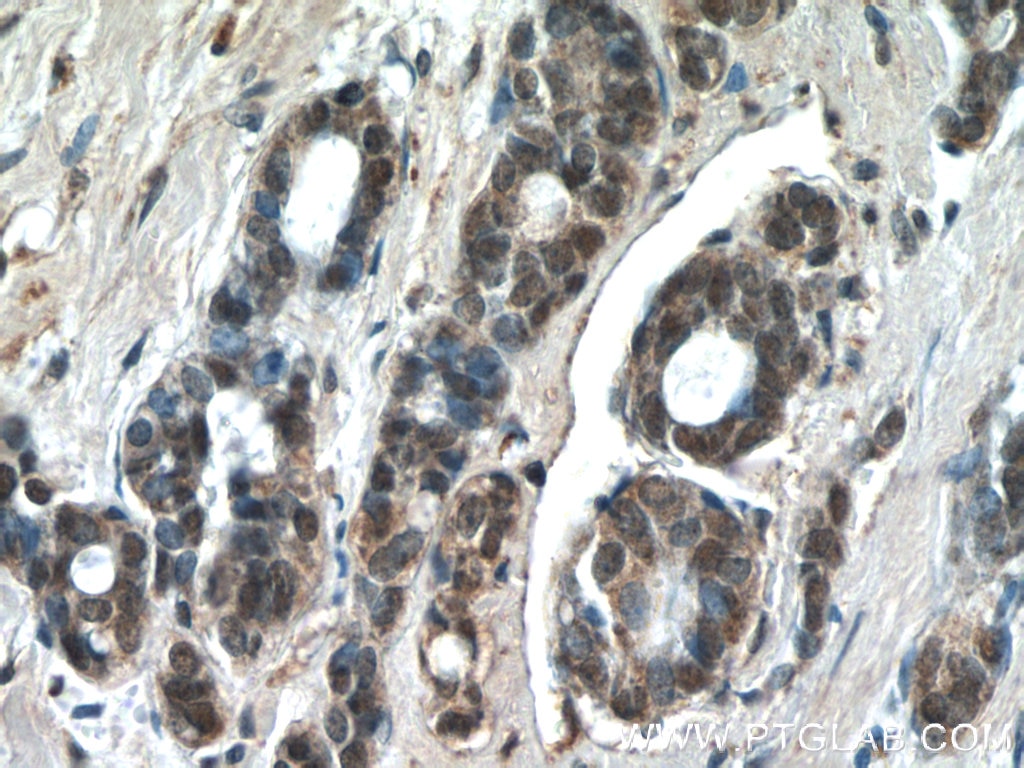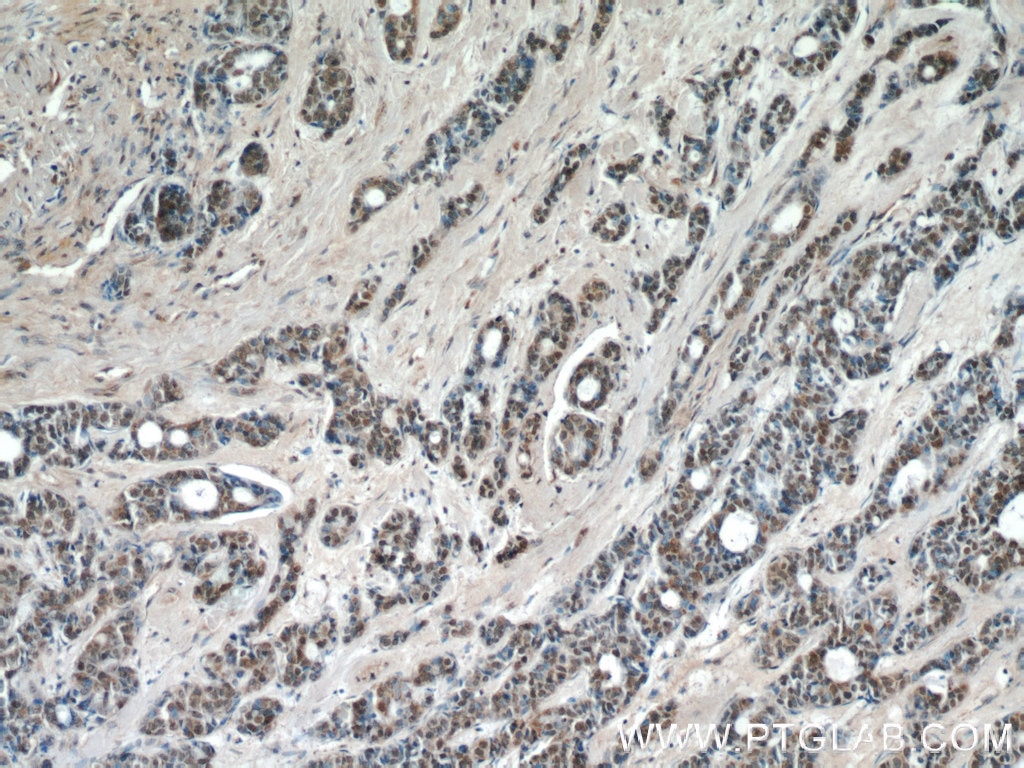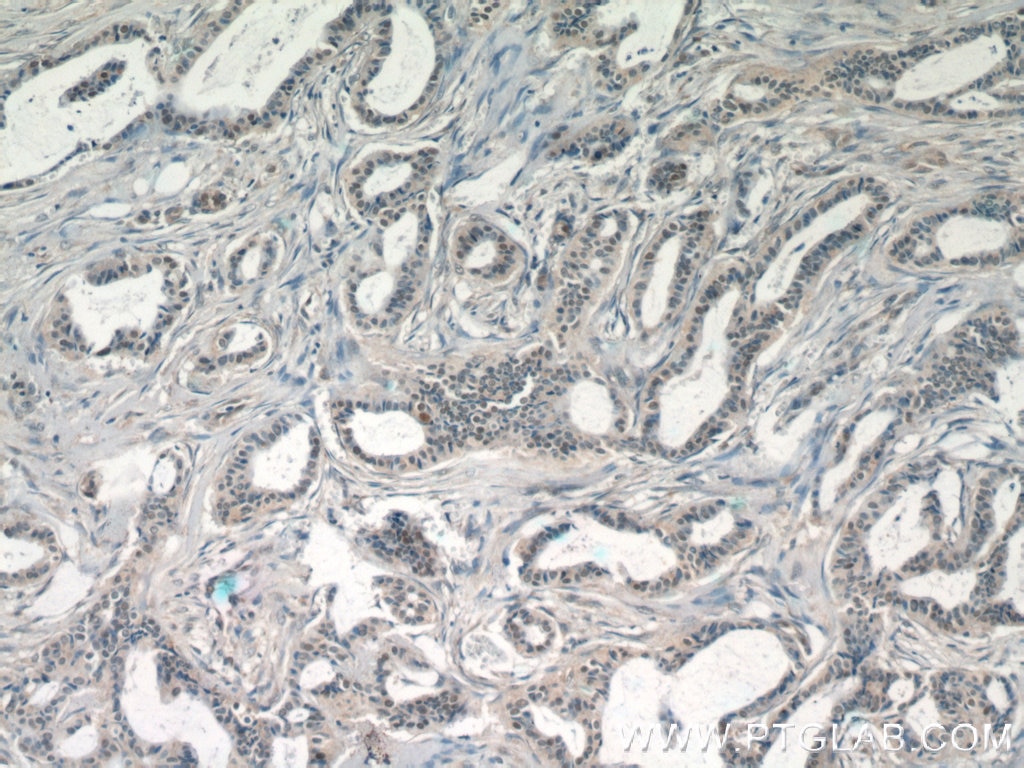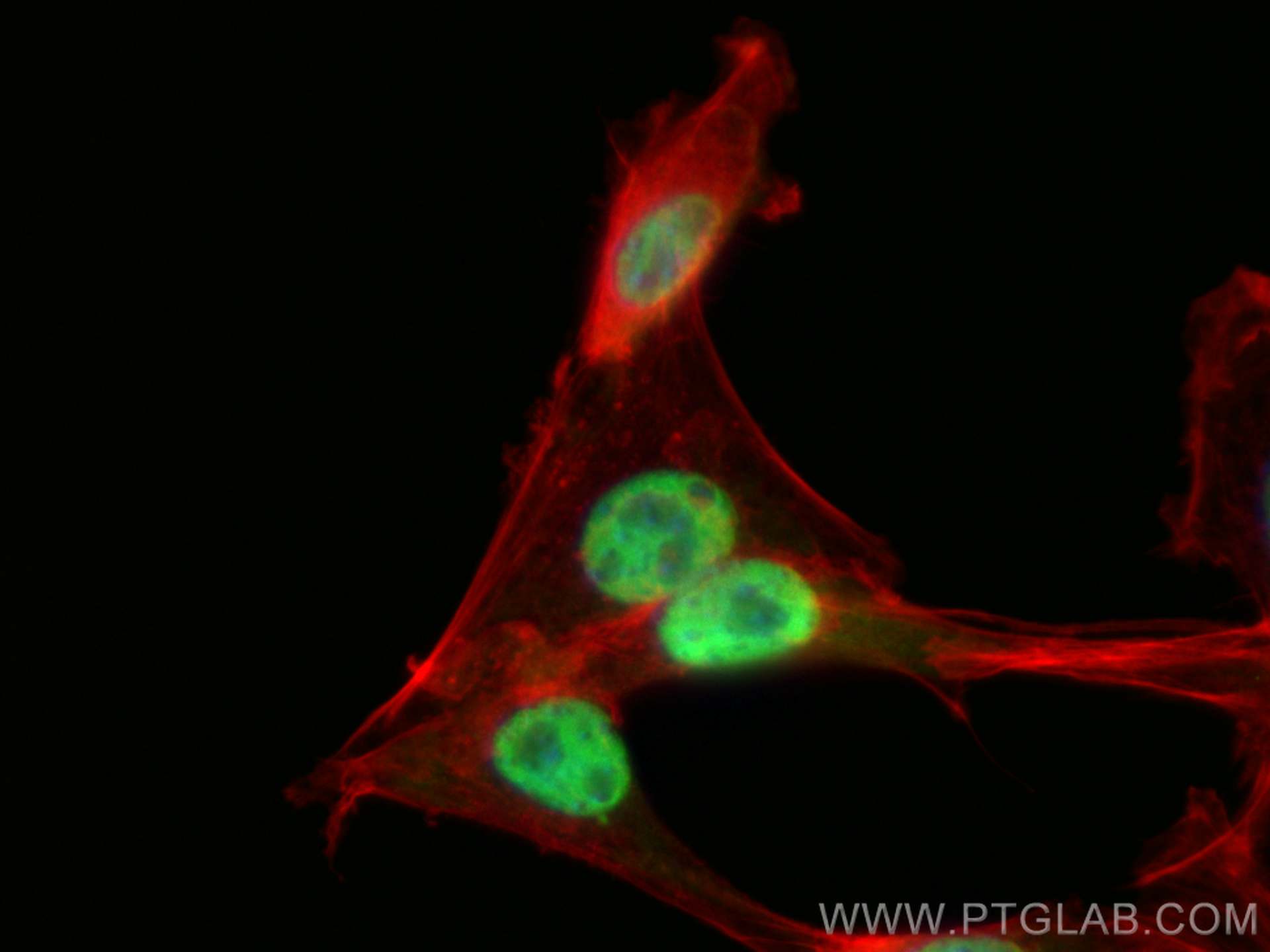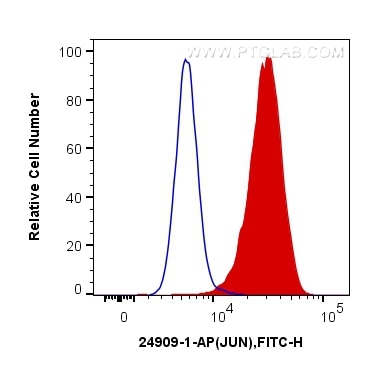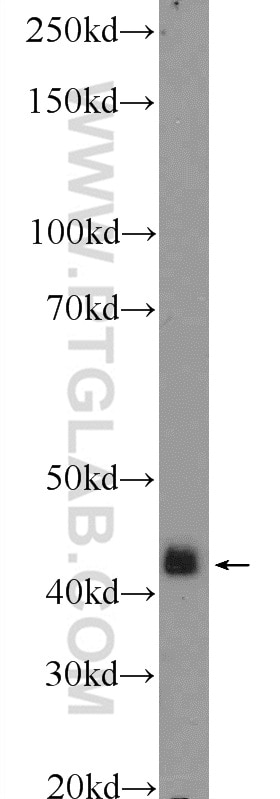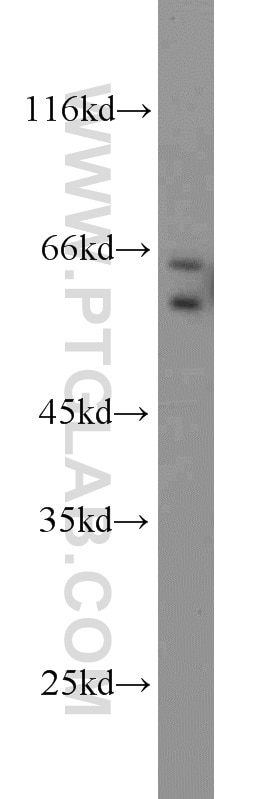- Phare
- Validé par KD/KO
Anticorps Polyclonal de lapin anti-JUN
JUN Polyclonal Antibody for WB, IF, IHC, ELISA, FC (Intra)
Hôte / Isotype
Lapin / IgG
Réactivité testée
Humain, souris, Hamster et plus (1)
Applications
WB, IHC, IF/ICC, FC (Intra), IP, CoIP, ChIP, ELISA
Conjugaison
Non conjugué
N° de cat : 24909-1-AP
Synonymes
Galerie de données de validation
Applications testées
| Résultats positifs en WB | UV treated HeLa cells, cellules C6, cellules HEK-293, cellules HeLa, cellules HepG2, cellules NIH/3T3, cellules NIH/3T3 traitées au UV |
| Résultats positifs en IHC | tissu de cancer du col de l'utérus humain, tissu de cancer du sein humain il est suggéré de démasquer l'antigène avec un tampon de TE buffer pH 9.0; (*) À défaut, 'le démasquage de l'antigène peut être 'effectué avec un tampon citrate pH 6,0. |
| Résultats positifs en IF/ICC | cellules NIH/3T3, |
| Résultats positifs en FC (Intra) | cellules NIH/3T3 |
| Résultats positifs en cytométrie | cellules NIH/3T3 |
Dilution recommandée
| Application | Dilution |
|---|---|
| Western Blot (WB) | WB : 1:1000-1:6000 |
| Immunohistochimie (IHC) | IHC : 1:20-1:200 |
| Immunofluorescence (IF)/ICC | IF/ICC : 1:200-1:800 |
| Flow Cytometry (FC) (INTRA) | FC (INTRA) : 0.20 ug per 10^6 cells in a 100 µl suspension |
| Flow Cytometry (FC) | FC : 0.20 ug per 10^6 cells in a 100 µl suspension |
| It is recommended that this reagent should be titrated in each testing system to obtain optimal results. | |
| Sample-dependent, check data in validation data gallery | |
Applications publiées
| KD/KO | See 4 publications below |
| WB | See 47 publications below |
| IHC | See 3 publications below |
| IF | See 12 publications below |
| IP | See 3 publications below |
| CoIP | See 1 publications below |
| ChIP | See 3 publications below |
Informations sur le produit
24909-1-AP cible JUN dans les applications de WB, IHC, IF/ICC, FC (Intra), IP, CoIP, ChIP, ELISA et montre une réactivité avec des échantillons Humain, souris, Hamster
| Réactivité | Humain, souris, Hamster |
| Réactivité citée | rat, Humain, souris |
| Hôte / Isotype | Lapin / IgG |
| Clonalité | Polyclonal |
| Type | Anticorps |
| Immunogène | JUN Protéine recombinante Ag17639 |
| Nom complet | jun oncogene |
| Masse moléculaire calculée | 331 aa, 36 kDa |
| Poids moléculaire observé | 39 kDa |
| Numéro d’acquisition GenBank | BC068522 |
| Symbole du gène | JUN |
| Identification du gène (NCBI) | 3725 |
| Conjugaison | Non conjugué |
| Forme | Liquide |
| Méthode de purification | Purification par affinité contre l'antigène |
| Tampon de stockage | PBS avec azoture de sodium à 0,02 % et glycérol à 50 % pH 7,3 |
| Conditions de stockage | Stocker à -20°C. Stable pendant un an après l'expédition. L'aliquotage n'est pas nécessaire pour le stockage à -20oC Les 20ul contiennent 0,1% de BSA. |
Informations générales
JUN is also named as c-Jun and AP1, belongs to the bZIP family and Jun subfamily. JUN, the most extensively studied protein of the activator protein-1 (AP-1) complex, is involved in numerous cell activities, such as proliferation, apoptosis, survival, tumorigenesis and tissue morphogenesis[PMID: 22180088]. JUN is a transcription factor that recognizes and binds to the enhancer heptamer motif 5'-TGA[CG]TCA-3'. It promotes activity of NR5A1 when phosphorylated by HIPK3 leading to increased steroidogenic gene expression upon cAMP signaling pathway stimulation. JUN is a basic leucine zipper (bZIP) transcription factor that acts as homo- or heterodimer, binding to DNA and regulating gene transcription[PMID: 9732876]. In additon, extracellular signals can induce post-translational modifications of JUN, resulting in altered transcriptional activity and target gene expression[PMID:8464713]. More over, it has uncovered multiple layers of a complex regulatory scheme in which JUN is able to crosstalk, amplify and integrate different signals for tissue development and disease. Jun is predominantly nuclear, ubiquitinated Jun colocalizes with lysosomal proteins[PMID: 15469925]. This antibody is a rabbit polyclonal antibody raised against a region of human JUN. Both phosphorylated (p-c-Jun) and unphosphorylated forms of c-Jun, with sizes of 42-45 kDa and 36-39 kDa, respectively are obtain in some experiments. (PMID: 17210646)
Protocole
| Product Specific Protocols | |
|---|---|
| WB protocol for JUN antibody 24909-1-AP | Download protocol |
| IHC protocol for JUN antibody 24909-1-AP | Download protocol |
| IF protocol for JUN antibody 24909-1-AP | Download protocol |
| Standard Protocols | |
|---|---|
| Click here to view our Standard Protocols |
Publications
| Species | Application | Title |
|---|---|---|
Cell Metab CircACC1 Regulates Assembly and Activation of AMPK Complex under Metabolic Stress.
| ||
Nat Commun Proteomic profiling and genome-wide mapping of O-GlcNAc chromatin-associated proteins reveal an O-GlcNAc-regulated genotoxic stress response. | ||
Nat Commun TNF antagonist sensitizes synovial fibroblasts to ferroptotic cell death in collagen-induced arthritis mouse models. | ||
Biomaterials Targeted regulation of lymphocytic ER stress response with an overall immunosuppression to alleviate allograft rejection. | ||
Oxid Med Cell Longev RING Finger Protein 10 Regulates AP-1/Meox2 to Mediate Pirarubicin-Induced Cardiomyocyte Apoptosis |
